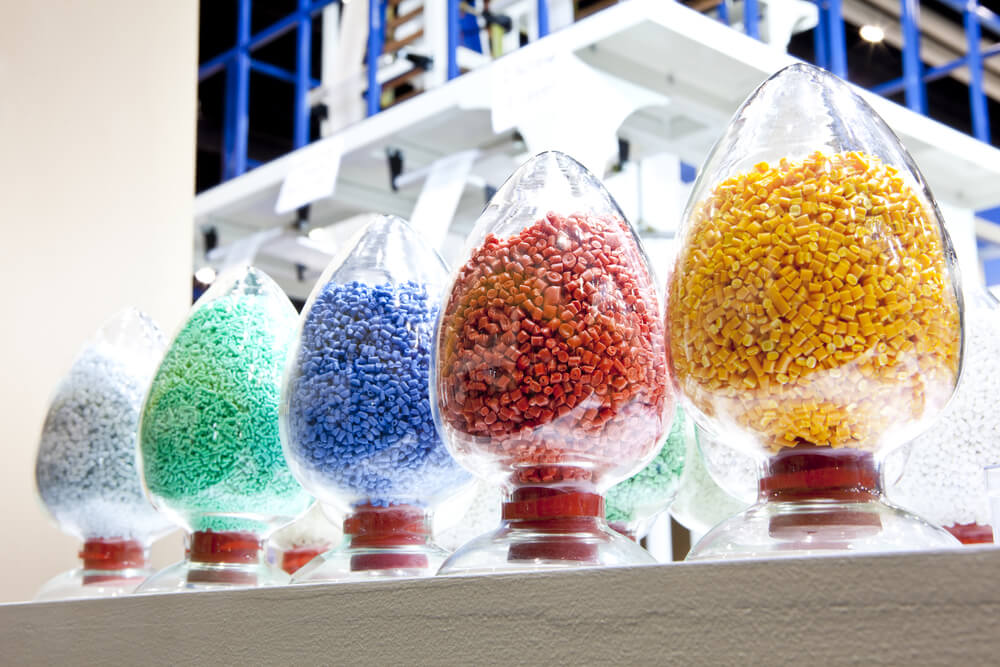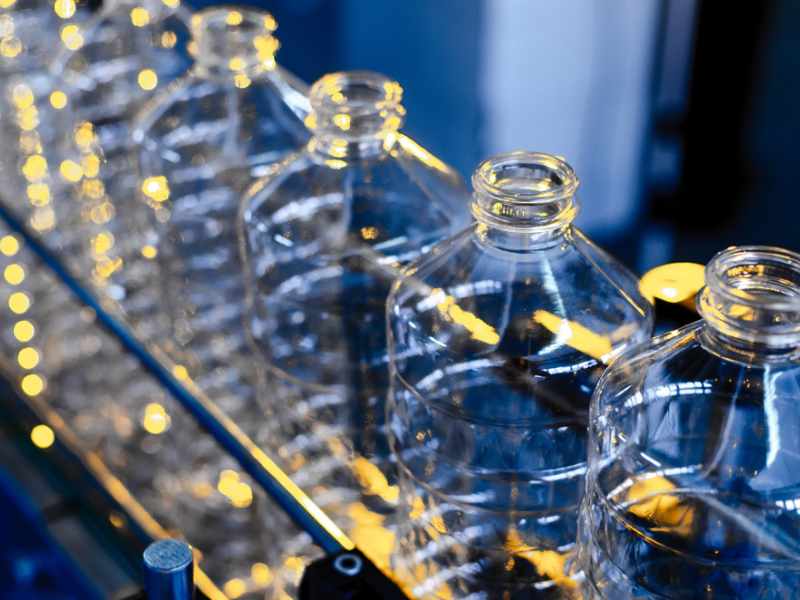Plastic products have become indispensable in modern life due to their lightweight, hygienic, durable, and versatile properties. But despite its prevalence, we don't always know where this material comes from. Or, more precisely, what are plastic manufacturing processes and how do they work?
There are many different techniques used in the plastic manufacturing process. These include injection molding, blow molding, plastic extrusion, and plastics compounding. Each technique is used in mass production to create specific products. Read on to discover the benefits of each process, the technicalities involved, and how our expertise in auxiliaries can help!
1. Injection Molding
Injection molding refers to the plastic manufacturing process where melt or molten materials are injected into a mold. It is ideal for producing products in large volumes, most typically used in mass-production manufacturing and large-scale operations. Commonly used materials include metals, glasses, thermoplastic, thermosetting polymers, and so on. The advantage of injection molding is that millions of identical parts can be made efficiently at a relatively lower cost. However, injection molding can be complex depending on the shape of the part and molding conditions. If these are not addressed properly, a number of product defects can occur on the molded parts.
2. Blow Molding
Blow molding is a process that uses compressed air to inflate molten plastic like a balloon so it takes the shape of the mold that it is in, creating a hollow plastic product. Once the plastic has cooled and hardened, the mold opens and the part is ejected. A common example of this plastic manufacturing process is the production of drinking bottles. The advantages of blow molding include fast production rates, customization, and scalability. However, blow molding may not be enough for production that requires intricate details.
3. Plastics Extrusion
Plastic extrusion involves feeding plastic granules into a barrel, where it is melted and moved throughout the machine. The plastic then exists through a pipe into a die which shapes the plastic, completing the extrusion process. There are 2 forces involved in this plastic manufacturing process: the mechanical energy generated by turning screws and by heaters arranged along the barrel. Speaking of the advantages of plastic extrusion, it is a cost-effective process that uses very simple processes. However, extrusion requires highly trained technicians to carry out this process to achieve consistent results.
4. Plastics Compounding
Plastic compounding uses raw plastic materials with additives such as color, property, and performance requirements. The goal of this plastic manufacturing process is to achieve a homogeneous blend of different raw materials. During the plastic compounding process, raw material is heated until it becomes molten and is continuously blended to create the required results. After this, extrusion occurs, and the plastic is cooled and broken into pellets for shipping. Plastic compounding is an effective solution for achieving food-safe plastic, specific colors of plastic, fire retardant plastic, increasing plastic’s strength and flexibility, and achieving antimicrobial properties.
How to Choose the Right Plastic Manufacturing Process?
Each plastic manufacturing process is suitable for different applications, and there are many aspects to consider when choosing the right one for your production line. The process you choose will depend on the plastic you plan to use, the form of the product, your budget, and the production time required. Let's look at some aspects to consider when choosing the right process for you.
Material: Thermoplastic or Thermosets?
When deciding on your plastic manufacturing process, you must consider the kind of raw plastic material you will be using. Thermoset refers to a synthetic polymer obtained by irreversibly hardening (or "curing") a soft solid or viscous liquid resin. These materials must be carefully controlled, making them suitable for injection molding processes. Thermoplastics are softer and have a lower melting point. It is typically used for disposable and recyclable plastics, such as creating plastic bottles in blow molding processes.
Product Forms
Meanwhile, the type/format of the product plays a large part in deciding which process you should choose. Note that not all products can be made in each plastic manufacturing process. For example, blow molding is used to make singular, hollow products like bottles and beakers. Injection molding, on the other hand, is chosen to manufacture solid parts such as car body panels and everyday household items.
Volume and Costs of Products
Costs and budgeting are always essential factors in your business operation. When determining which plastic manufacturing process suits you best, you must consider the cost of production, the demand for products, and the cost of materials. For instance, if you want to produce large numbers of identical parts or products in one run, injection molding would be an excellent solution.
Production Lead Time
Production lead time is an essential factor to consider when choosing your plastic manufacturing process. Some processes, such as plastic extrusion and compounding, usually take longer than injection molding or blow molding. Take injection molding, for example, the typical lead time could take 3 to 4 weeks for a single cavity prototype mold.

Relevant Auxiliaries for Plastic Manufacturing Process
There are various machines used within the plastic manufacturing process. In the meantime, these facilities may not reach their peak performance without the help of plastic auxiliary equipment. Each model provides valuable assistance to the technicians that oversee the manufacturing. For instance, there are machines controlling the temperature of the plastic in its raw and molten state. Others are dedicated to eliminating excess moisture from raw plastics and finished products. Below, let’s take a look at some widely used auxiliaries:
1. Water/Air/Oil Temperature Controller
Types of mold temperature controllers are used to heat and maintain the temperature of the plastics during manufacturing. Heating the plastic until it becomes molten is essential when molding plastic. Then, maintaining this molten temperature when various processes occur ensures the final product is free from defects, while effectively shortening the cycle time.
2. Water/Air Cooling Chiller
Water and air cooling chillers are used throughout the plastic manufacturing process to cool molten plastic after molding. Ensuring sufficient cooling time not only prevents common surface defects but also accelerates production by minimizing the cycle time.
3. Dehumidifying Dryer
Dehumidifying dryers are used to remove excess moisture from plastics before processing. When implemented correctly, plastic resin drying helps improve the appearance, structure, and strength of injection-molded parts. It also prevents hydrolysis and premature part failure.
4. Continuous Dosing
Dosers are designed to automatically introduce ingredients at the throat of a processing machine. Exact and uninterrupted dosing is very important to various plastic processing methods, including injection molding, extrusion, and blow molding. This ensures higher stability and uniformity in the mixing ratio achieved throughout the process. At Flying Tiger, all of our models feature continuous dosing—shot by shot, they release predefined amounts of material in a definite time in a specified quantity, without unnecessary stops. This contributes to a stable production process, fewer rejects, and high-quality end products.
The demand for efficient and cost-effective processes within plastic manufacturing is high. With the help of expertly designed machines and intelligent technologies, you can achieve productivity like never before. At Flying Tiger, we provide you with expert solutions and advice to improve your plastic manufacturing process so that you will achieve outstanding results. Contact Us Today to get a free quote!
Back







